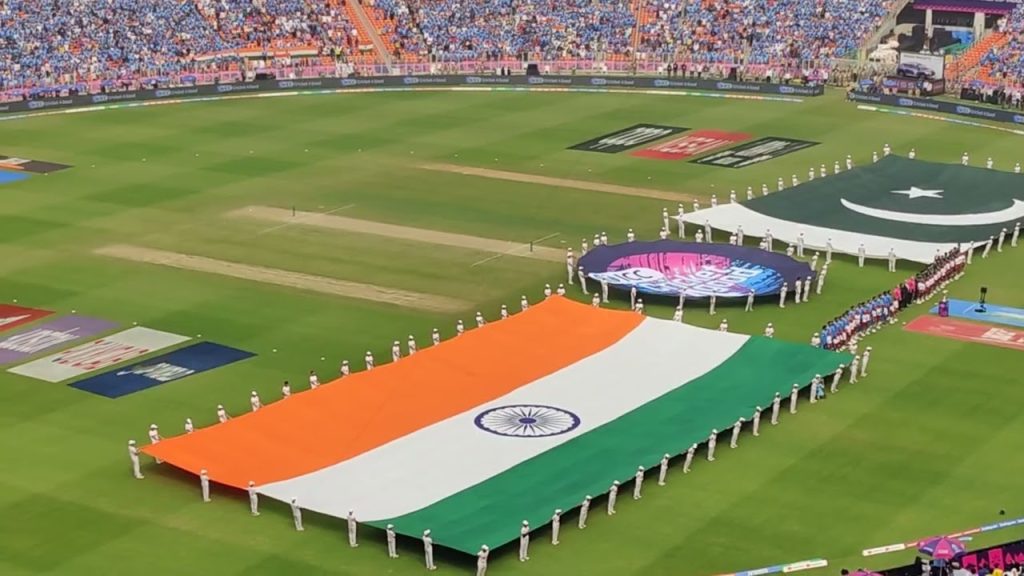The historic rivalry between India and Pakistan in cricket is one of the most intense and passionate in the world of sports. Originating from the partition of British India in 1947, cricket quickly became a battlefield where political tensions and national pride intersected over the decades. The first Test series between India and Pakistan took place in 1952, marking the beginning of a brutal sporting rivalry that goes beyond the boundaries. Over the decades, matches between the two nations have been marked by high drama, nail-biting finishes, and legendary performances from cricketing icons on both sides. These encounters not only captivate millions of fans but also serve as a cultural and social phenomenon, influencing diplomacy and public sentiment between the neighbouring countries.

Broadcasting rights for India-Pakistan cricket matches represent a pivotal revenue stream, with deals often exceeding $100 million per series. These rights are fiercely contested among global broadcasters and digital platforms, reflecting the matches immense viewership and cultural significance. Companies like Star Sports (part of Disney) in India, PTV Sports in Pakistan, and broadcasters in other cricket-loving countries secure rights to broadcast matches on television networks. Streaming giants like SonyLIV & Hotstar (Disney+ Hotstar), secure online streaming rights, catering to a younger, digitally savvy audience globally.
Broadcasters and digital platforms earn revenue through advertising during live broadcasts. India-Pakistan matches command high advertising rates due to the large viewership, allowing companies to reach a diverse and engaged audience. Digital platforms may charge subscription fees to access live streams of matches, providing a steady revenue stream from dedicated cricket fans worldwide. Broadcasters often secure sponsorships from major brands seeking to capitalize on the matches popularity and viewership.
The cricket rivalry between India and Pakistan serves as a powerful catalyst for a global economy deeply intertwined with sports. This enduring rivalry transcends mere competition, capturing the imaginations of over a billion viewers worldwide and generating substantial economic impacts. Fans travel from both countries and around the world for these matches, leading to a surge in demand for flights and hotels. This benefits airlines, hotels, and tourism sectors. There’s a rise in spending on food, beverages, merchandise, and other cricket-related items. This benefits local businesses and restaurants. Broadcasters see a rise in viewership, leading to increased advertising revenue. Brands spend more to capitalize on the high viewership of the match. During the 2023 Cricket World Cup hosted by India, the India-Pakistan match led to a, 4,000% spike in accommodation searches in the host city & there is 20% rise in flight bookings compared to the previous year.
The marketing potential of India-Pakistan cricket matches is often described as a goldmine for brands seeking to reach a vast and passionate audience. With viewership numbers surpassing a billion globally, these matches offer unparalleled opportunities for brands to amplify their visibility and engagement. Companies strategically place advertisements during broadcasts and digital streams, capitalizing on the heightened emotional intensity and national pride associated with these encounters. Sponsorships are not just about logo placements; they involve immersive brand experiences, interactive campaigns, and targeted promotions that resonate deeply with fans.
Giant brands made billions of dollar revenue during India vs Pakistan cricket rivalry. One famous example of a brand leveraging the India-Pakistan cricket rivalry is Coca-Cola. Coca-Cola has strategically aligned itself with major cricket tournaments and matches, including those between India and Pakistan, to enhance its brand visibility and engagement. During these matches, Coca-Cola typically runs emotive and engaging advertising campaigns that resonate with the passion and fervour of cricket fans. They often feature iconic cricketing moments, fan celebrations, and messages of unity and enjoyment, aligning closely with the sentiments of the viewers. Coca-Cola also activates sponsorships with innovative on-ground activations, digital campaigns, and exclusive promotions. These initiatives not only boost brand recall and consumer loyalty but also capitalize on the massive viewership and fan engagement surrounding India-Pakistan cricket clashes to drive sales and strengthen its market position in the region.
An India vs Pakistan match is more than just a game, it’s a vibrant festival! During India vs Pakistan cricket matches, local merchants experience a significant surge in revenue as these events are celebrated akin to festive occasions. Small businesses, including vendors selling street food, merchandise, and souvenirs, capitalize on the influx of spectators to stadiums and viewers glued to screens worldwide. The streets transform into a sea of team colours. Local vendors selling flags, jerseys, face paint, and other fan paraphernalia experience a massive spike in sales. Smaller hotels, guesthouses, and local transportation services benefit from fans traveling to the match city.
Local cafes and restaurants set up large screens to attract fans who can’t get tickets. The shared experience creates a lively atmosphere, encouraging more spending on food and beverages. After the match, fans erupt in celebratory parades, creating a vibrant atmosphere that benefits street vendors selling snacks, drinks, and celebratory items. The India vs Pakistan cricket match is celebrated as more than just a sporting event; it is embraced as a cultural festival that transcends borders and unites fans across nations.
The India-Pakistan cricket rivalry is a prime example of how sports can drive substantial economic growth and create powerful cultural phenomena. The matches generate enormous revenue through broadcasting rights, merchandise sales, and local economic boosts, while brands capitalize on unparalleled marketing opportunities. Celebrated as a festival, these matches unite fans globally, fostering a sense of community amidst fierce competition. This rivalry demonstrates the profound impact of sports on business, offering valuable lessons in leveraging passion and unity for economic gain.
Written by : Ansh C Vachhani | Edited By Souberi Chakrabarty


